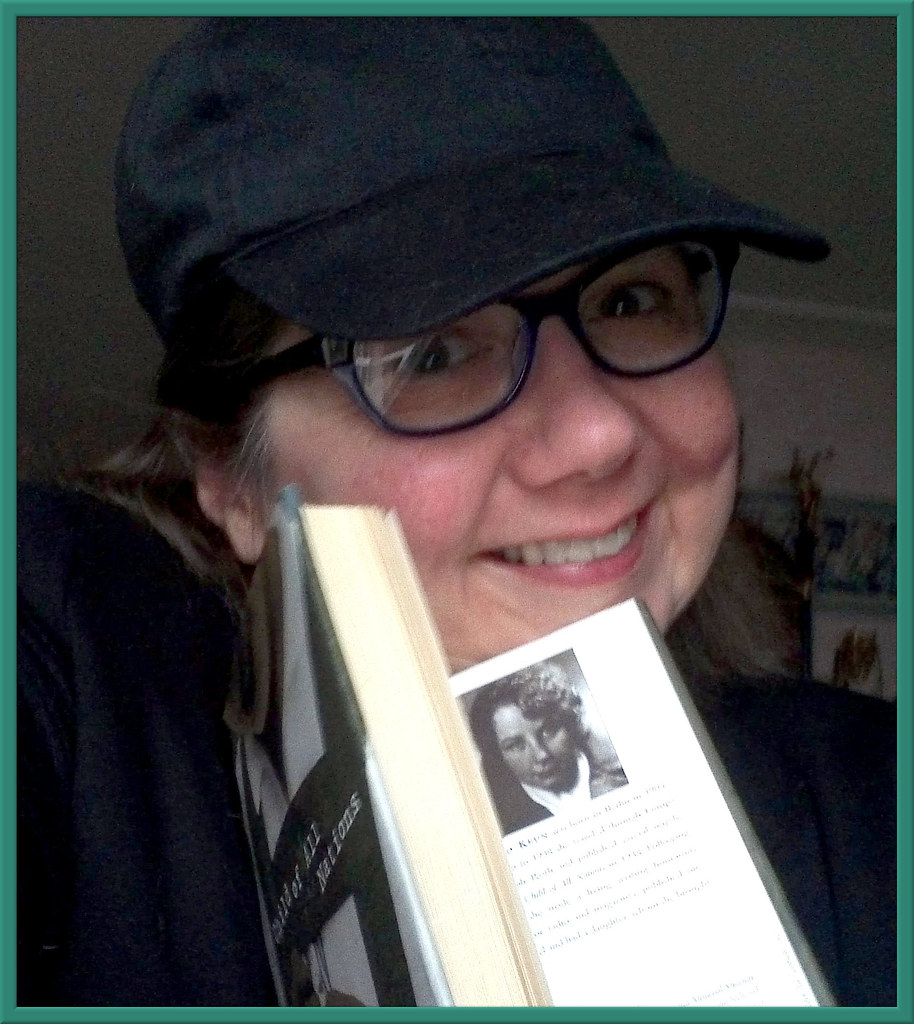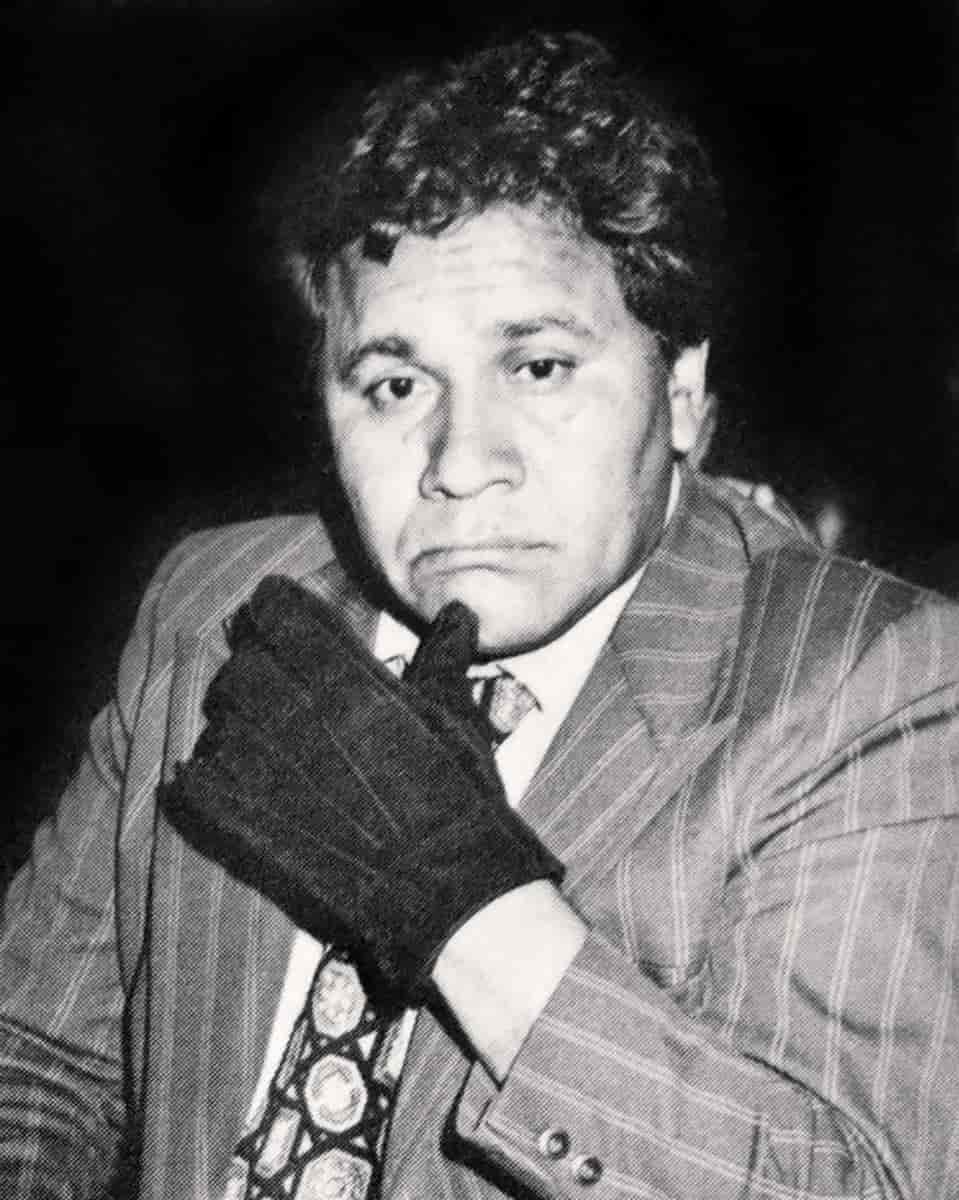
The world of literature often brings us face-to-face with breathtaking narratives, intricate plots, and characters that leap off the page and into our imaginations. But what happens when the most compelling mysteries aren’t confined to the fictional worlds authors create, but instead, envelop the authors themselves? It’s a truly wild thought, isn’t it? Beyond their shared passion for putting pen to paper, many celebrated writers share another uncanny commonality: their own puzzling disappearances. Some eventually resurface, their stories continuing, while others remain lost to history, their fates forever debated and their legacies shrouded in enigma.
These are not just tales of fleeting fame or quiet retirements; these are stories of sudden, often inexplicable vanishings that have stumped investigators, baffled fans, and inspired endless speculation for decades, sometimes even centuries. From a legendary mystery writer who became her own greatest unsolved case, to a child prodigy who seemingly walked out of her life, and a master of the macabre whose final days were as dark as his fiction, these accounts truly make you wonder about the thin line between reality and the stories we consume.
So, buckle up, because we’re about to dive deep into some of the most famous and utterly mind-boggling instances where writers simply… disappeared. Each of these cases leaves a trail of clues, theories, and more than a few unanswered questions, inviting us to become armchair detectives in a literary whodunit of epic proportions. Get ready to explore the first five fascinating sagas of vanishing wordsmiths!

1. **Agatha Christie**Imagine the world’s most famous mystery writer becoming the subject of her own perplexing mystery. That’s precisely what happened with Agatha Christie, the Queen of Crime herself! In December 1926, after a heated argument with her husband, Archie, about their impending separation, Christie drove off into the night from their home in Sunningdale. The following morning, her car was discovered abandoned at Newlands Corner, with no clues as to her whereabouts, sparking fears that she might have drowned herself in the nearby Silent Pool. This wasn’t just a local incident; her disappearance made international headlines, even gracing the front page of The New York Times, triggering one of the biggest manhunts in British history.
Eleven agonizing days passed, filled with intense police searches involving thousands of volunteers and even fellow authors like Sir Arthur Conan Doyle, who famously tried to use a medium to find her. Then, as suddenly as she vanished, Christie reappeared. She was spotted at the Swan Hydropathic Hotel in Harrogate, having checked in under the name of Mrs. Tressa Neele – the surname of Nancy Neele, her husband’s lover. When her husband came to collect her, she reportedly had little to no recollection of what had transpired during her disappearance, a detail that only deepened the mystery rather than resolving it.
Naturally, theories abounded and have continued to fuel speculation among fans and biographers for nearly a century. One theory, often put forth by her husband and the police at the time, suggested she suffered from amnesia, possibly triggered by a car accident, which would explain her lost identity and memory. Another popular idea posits that she suffered a nervous breakdown from the emotional distress of her mother’s recent death and the profound embarrassment of her husband’s infidelity – an idea made plausible by her swift divorce from Archie shortly after the event. Some even dared to suggest her disappearance was a calculated, albeit sneaky, publicity stunt, given the extensive newspaper coverage that certainly boosted the already successful author’s profile.
Despite the intense public fascination, Agatha Christie herself never publicly acknowledged or spoke about the occurrence for the rest of her life, choosing instead to simply continue writing her bestselling novels. This steadfast silence only cemented her disappearance as an enduring enigma, a real-life plot twist left entirely open to interpretation. It’s truly a testament to her storytelling prowess that even her own life contained a narrative as captivating and unresolved as any of her fictional creations. Her case perfectly illustrates how sometimes, the most intricate puzzles are found not in books, but in the lives of those who write them.
Read more about: Anjelica Huston: Unveiling the Layers of Hollywood Royalty, Beyond the Addams Family Mystique

2. **Ambrose Bierce**Ambrose Bierce, an American short story writer, poet, journalist, and Civil War veteran, carved out a prolific writing career spanning decades, earning him immense respect both in his lifetime and posthumously. Known for his sharp wit, cynical tone, and fascination with death, particularly evident in works like “The Devil’s Dictionary” and the chilling short story “An Occurrence at Owl Creek Bridge,” Bierce’s own end would prove to be as mysterious and grim as many of his tales. He was considered one of the most influential journalists in the United States, with his war stories notably inspiring literary giants like Ernest Hemingway and Stephen Crane.
In 1913, at the age of 71, Bierce embarked on what would become his final journey. He left the United States and headed south to Mexico, reportedly with the intention of covering the ongoing Mexican Revolution for a story. His last known communication was a letter dated December 26, 1913, addressed to his friend Blanche Partington, which chillingly concluded with the line: “As to me, I leave here tomorrow for an unknown destination.” In this correspondence, he conveyed a distinct sense of impending mortality, explicitly referring to the possibility of being killed by the armies entrenched in Mexico, almost as if he were foreseeing his own dramatic exit from the world stage.
Beyond this final letter, there are precious few known truths surrounding Bierce’s disappearance. Scholars often point to his own premonition as the most plausible theory, given the extreme danger inherent in walking into the heart of a civil war zone. It’s quite easy to imagine a seasoned, yet aging, war correspondent succumbing to the chaos of such a conflict. However, despite numerous investigations and widespread interest, no physical evidence, such as a body or definitive sighting confirmation, has ever been found. This absence of concrete facts has left his disappearance a permanent, unsettling part of his final legacy, a real-life mystery penned by the man who wrote so expertly about death and the unknown.
Various theories have, of course, surfaced over the years. Some speculate that he might have been killed by Pancho Villa’s men, caught in the crossfire or executed as a perceived spy. Others suggest he might have simply disappeared intentionally, perhaps seeking an escape from his personal problems, or even that he orchestrated his own death as a final, dark jest. The inherent ambiguity of his fate, coupled with his characteristic dark sense of humor and preoccupation with themes of mortality, makes his vanishing seem almost poetically fitting, as if he had deliberately chosen to write his own unwritten, enigmatic final chapter, forever baffling his readers and solidifying his place among literature’s great unsolved mysteries.
Read more about: From Rock Stars to Prime Ministers: The Enduring Mysteries of Celebrities Who Vanished Without a Trace

3. **Barbara Newhall Follett**Barbara Newhall Follett was a true child prodigy, dazzling the literary world at an astonishingly young age. In 1927, at just 12 years old, she published her debut novel, “The House Without Windows,” a work that garnered immediate success and earned her widespread praise in newspapers and media. Critics hailed her as an incredible talent, noting her “otherworldly” writing. Her second novel, “The Voyage of the Norman D,” followed when she was 14, also receiving critical acclaim. However, this early, meteoric success belied the emotional challenges that would soon plague her young life and tragically cut short her promising literary career.
Following these impressive initial publications, Follett’s life took a difficult turn. Her father, who had been a significant supporter and driving force behind her writing, made the devastating decision to abandon Barbara and her mother for a younger woman. This sudden departure left them in severe financial hardship, and without the encouragement and resources her father had provided, Follett struggled. She went on to write only two more manuscripts, both remaining unpublished, before eventually giving up her literary aspirations entirely. To make ends meet, she took jobs as a secretary, a stark contrast to her earlier life as a celebrated young author.
Her personal life continued to unravel. She married Nickerson Rogers, but by 1939, when she was just 25, their marriage was deeply troubled, marked by increasing unhappiness and depression on her part. Following an argument with Nickerson in December of that year, Barbara Newhall Follett made a fateful decision: she left their family home, reportedly with only $30 in her pocket, and was never seen again. Her mother, Helen, tirelessly searched for her for years, but no new leads or public information ever emerged, leaving her disappearance an unsolved and heartbreaking mystery.
Many theories have been proposed regarding what might have happened to Follett. Some speculate about foul play or even suicide, both arising from the profound distress of her marital issues and previous life struggles. However, since her body has never been found, neither of these theories can be definitively confirmed. What adds an intriguing, almost chilling, layer to her story is the striking parallel between her disappearance and the plot of her first novel, “The House Without Windows,” in which a young girl decides to leave home and vanish into nature. Could her own fiction have foreshadowed her real-life actions? Barbara Newhall Follett’s case remains one of the most famous literary mysteries, a poignant tale of a brilliant young mind who vanished as quietly as her characters into an unknown fate.
Read more about: Vanished Without a Trace: 14 Shocking Celebrity Disappearances That Still Haunt Us

4. **Edgar Allan Poe**Edgar Allan Poe, one of the most famous and influential writers in history, known for his haunting poetry and chilling short stories, ironically met an end as dark and mysterious as any of his fictional narratives. Just as his life seemed to be taking a turn for the better, with plans to marry his first love and embark on a new chapter, Poe disappeared. He was on what should have been a short and straightforward trip from Richmond to Philadelphia and then on to New York, but he never made it past Baltimore, vanishing for an entire week in October 1849, his whereabouts unknown and his fate uncertain.
His reappearance was as unsettling as his disappearance. Poe was eventually found semi-conscious, delirious, and reportedly wearing someone else’s ill-fitting clothing, outside a tavern in Baltimore. He was immediately rushed to Washington College Hospital, where he was treated in a windowless room by only one attending physician. Poe succumbed to his mysterious ailment and died there a week later, on October 7, 1849, never having been able to explain what had happened during his lost week. Officially, his death was attributed to “phrenitis,” or congestion of the brain, a broad term that, in the context of the time, often served as a euphemism for death by alcohol or drug overdose. Disturbingly, no autopsy was performed, and virtually no medical records were kept, leaving his official cause of death incredibly vague and ripe for speculation.
Given that Poe had seemingly been on an upward trajectory, financially and romantically, the idea that he suddenly succumbed to a drinking binge left many confused. It was known that some of his literary enemies, eager to tarnish his reputation, actively sought to remember him solely as an opium addict and heavy drinker. However, others argued that Poe was a lightweight when it came to alcohol, experiencing long periods of sobriety between infrequent drinking episodes. Further adding to the mystery, just months before his disappearance and death, Poe had actually pledged sobriety and joined the Sons of Temperance, making the conventional explanation of an alcohol-induced death incredibly perplexing and contradictory to his recent commitments.
Consequently, numerous alternative theories have emerged over the years, attempting to solve the puzzle of Poe’s final days. One compelling theory suggests he might have died from rabies, which would account for his reported symptoms of deliriousness and a supposed reluctance to drink water while in the hospital – a classic sign of hydrophobia. Another theory, supported by records indicating his fiancé and physician had declared him too sick to travel before he disappeared, posited he suffered from a severe flu that advanced into pneumonia. More grim possibilities include heavy metal poisoning, being beaten to death, or even falling victim to “cooping,” a brutal form of election fraud where individuals were kidnapped, drugged, and forced to vote multiple times. Ultimately, Poe’s week-long disappearance and the enigmatic circumstances surrounding his death continue to shroud the last days of his life in a profound and enduring mystery, a fittingly dark end for the master of the macabre.” , “_words_section1”: “1997
Alright, if you thought the first batch of vanishing wordsmiths was wild, prepare yourselves! We’re about to delve into another set of equally mind-boggling cases that prove sometimes, truth is far stranger than any fiction an author could dream up. From planes vanishing into thin air to audacious fake-outs and lives simply swallowed by the unknown, these stories will have you questioning everything you thought you knew about literary endings.
So, grab your detective hats, because we’re not done playing literary detective yet! These next five disappearances offer a potent mix of intrigue, tragedy, and outright head-scratching moments that have captivated fans and historians for ages. Ready for more amazing stories of writers who literally stepped off the page and into their own unsolved mysteries? Let’s get right into it!
Read more about: Dull Box Office Bombs and Critical Disasters: The Absolute Worst Films You Can Skip

5. **Weldon Kees**Meet Weldon Kees: a true Renaissance man of the mid-20th century, juggling roles as a poet, film critic, painter, and even a jazz musician. His poetry, often lauded and compared to literary giants like T.S. Eliot, beautifully captured the loneliness and isolation many felt in post-war America. He was a force of creative energy, with several poetry collections under his belt, his last published just a year before he vanished.
But beneath the surface of this prolific artist, a darker current ran. Kees wrestled with profound depression and struggled with alcohol, challenges that took a heavy toll on his personal life. His marriage dissolved in 1954, adding to his growing despair. It was during this period of increasing unhappiness that he confided in friends about both his suicidal thoughts and, interestingly, the possibility of simply disappearing to start a new life in Mexico. Talk about a dramatic exit strategy!
Then, in July 1955, the mystery began. His car was discovered abandoned near the Golden Gate Bridge in San Francisco, with the keys still in the ignition. It was a scene that immediately sparked fears that he had taken his own life, a somber conclusion that many still lean towards given his previous confessions. However, the crucial piece of the puzzle – his body – was never found.
This lack of definitive proof has kept the Weldon Kees case tantalizingly open for debate. Was it a tragic leap into the Bay, his body swallowed by the famous fog? Or did he, in a stunning act of self-reinvention, manage to slip away to Mexico, leaving his old life and identity behind entirely? Without any confirmed clues or sightings since that fateful day, Kees’s disappearance remains one of literature’s most enduring and fascinating enigmas, a mystery as profound as any of the verses he penned.

6. **Irmgard Keun**If ever there was a writer who embraced life with an adventurous spirit, it was Irmgard Keun, a popular German novelist whose works dared to explore the lives of women in ways the Nazi party absolutely despised. Her books, deemed unacceptable by the regime, were promptly banned, forcing her to make a difficult choice: leave her homeland or face persecution. She chose exile, settling abroad in France and the Netherlands, continuing her writing away from the shadow of totalitarianism.
But then came a twist that sounds straight out of a spy novel! In 1940, a newspaper boldly reported that Irmgard Keun had died. Plot twist: she was very much alive! The details surrounding this sensational (and false) death report are still shrouded in mystery, including her exact involvement in its publication. What we do know is that she used this opportunity to forge papers and, with incredible audacity, sneak back into Germany to be with her parents, right under the nose of the very regime that had condemned her work.
Imagine the sheer courage and cunning it must have taken to pull off such a feat! For years after, she lived in relative obscurity, a stark contrast to the fame and critical acclaim she had enjoyed earlier in her career. She intentionally remained publicly ‘dead,’ effectively vanishing from the literary scene and mainstream consciousness. This strategic disappearance allowed her to navigate the dangerous wartime landscape and stay close to her loved ones.
It wasn’t until later in her life that Irmgard Keun finally gained the recognition she deserved, but much about her life and activities during those hidden years after 1940 remains delightfully unclear. Her story is a powerful testament to survival, resilience, and the lengths a writer might go to, not just to live, but to outwit oppressive forces. She may have convinced the world she was gone, but her legacy as a defiant voice and a master of her own vanishing act lives on.

7. **Ian Mackintosh**Get ready for a story that combines the thrill of espionage novels with the chilling reality of an unsolved aviation mystery. Ian Mackintosh wasn’t just a British Navy officer; he was a gifted thriller novelist and a screenwriter whose stories kept audiences on the edge of their seats. His first novel, “A Slaying in September,” was just the beginning, followed by four more gripping tales between 1967 and 1970. He really knew how to craft a suspenseful narrative, making his own disappearance all the more tragically ironic.
The stage for his vanishing was set on a seemingly ordinary evening, July 7, 1979. Mackintosh was flying a small plane with two other people: an experienced British Airways captain named Graham Baber, and his girlfriend, Susan Insole. The flight path was over the open ocean, a journey that suddenly took a terrifying turn when a distress signal from their plane was picked up by the United States Coast Guard. The signal was clear, but what followed was absolute silence.
Despite extensive efforts and the inherent hope that comes with any search, no wreckage of the plane was ever found. It was as if the aircraft, along with everyone on board, had simply been swallowed by the vast, unforgiving expanse of the sea. The sheer absence of any physical evidence has fueled endless speculation, leaving a gaping void in the lives of their loved ones and in the history of mysterious disappearances.
To this day, Ian Mackintosh and his companions have never been heard from again. Was it a mechanical failure, an unforeseen weather event, or something more sinister from the world of international intrigue he wrote so expertly about? The truth remains just beyond reach, a real-life plot twist that, unlike his novels, offers no neat resolution. His story perfectly fits the chilling description of a British thriller writer’s plane vanishing without a trace, leaving behind only questions and an enduring sense of the unknown.
Read more about: Bagels & Lox: Your Guide to the Iconic Dish, From History to How-To
8. **Oscar Zeta Acosta**Now here’s a writer who was larger than life, a true icon of the Chicano movement whose fiery spirit and outspoken activism resonated through his work. Oscar Zeta Acosta was not only a novelist but also a dedicated attorney and a fierce advocate, pushing back against the discrimination faced by Mexican-Americans in the 1960s and 1970s. His two controversial novels, “Autobiography of a Brown Buffalo” and “The Revolt of the Cockroach People,” were powerful, unflinching reflections of his experiences and beliefs.
Beyond his direct impact, Acosta achieved a different kind of immortality through his friendship with the legendary “gonzo journalist” Hunter S. Thompson. Their wild escapades together weren’t just the stuff of legend; Acosta actually became the inspiration for the unforgettable character of Dr. Gonzo in Thompson’s iconic book, “Fear and Loathing in Las Vegas.” Their bond was deep and enduring, a testament to Acosta’s magnetic personality and the profound effect he had on those around him.
But in May 1974, while traveling in Mazatlan, Mexico, Oscar Zeta Acosta simply vanished. His son, Marco Acosta, believes he was the last person to speak with his father, adding an intensely personal layer to the mystery. True to his form, Hunter S. Thompson, a loyal friend, tirelessly tried to uncover what happened, even offering his own theories.
Thompson speculated that Acosta, who reportedly struggled with addiction, might have been murdered by drug dealers. Alternatively, given his prominent political activism, he wondered if Acosta could have been the victim of a political assassination. Both theories certainly fit the dramatic and often dangerous life Acosta led. However, despite Thompson’s efforts and the passage of decades, none of these theories have ever been definitively proven, leaving Oscar Zeta Acosta’s disappearance a poignant, unsolved case, a fittingly enigmatic end for a man who lived and wrote so boldly.
Read more about: Vanished Without a Trace: 14 Shocking Celebrity Disappearances That Still Haunt Us

9. **Solomon Northup**Imagine being born free, living your life with dignity, only to be cruelly stripped of your liberty and thrust into the unimaginable horrors of slavery. This was the terrifying reality for Solomon Northup, whose harrowing experience became the powerful memoir, “Twelve Years a Slave.” Born a free man in New York in 1807 or 1808, Northup was a farmer and a talented professional violinist. His life took an unspeakable turn when, during a gig, he was kidnapped and sold into slavery in the American South.
After enduring twelve agonizing years of bondage, Northup’s freedom was miraculously regained thanks to his family’s tireless efforts to provide proof of his rightful liberty. His return to New York marked not just a personal triumph but the beginning of a new chapter in his life: fierce activism. He became a prominent public figure, courageously sharing his story and lecturing extensively across America in support of the burgeoning abolitionist movement, shedding light on the brutal realities of human bondage.
But just as he carved out this new, impactful role, Solomon Northup’s life took another mysterious turn. After 1857, he was no longer residing with his family, and the exact circumstances of his later life and death remain unknown to this day. This sudden absence sparked various theories, reflecting the dangers and uncertainties of the era. Some speculated, rather unkindly, that fame had gone to his head, and he’d become a “worthless vagabond” lost to a drinking binge – a theory that feels incredibly out of character for a man of his resilience.
A more grim, though less likely given his age at the time, theory suggested he might have been tragically captured a second time and resold into slavery. However, recent historical research, particularly from 21st-century historians like Carol Wilson and Clifford Brown, offers a more hopeful, albeit still unconfirmed, possibility: that Northup, after achieving freedom, actively joined the Underground Railroad, dedicating his life to helping enslaved people escape. These historians believe he likely died of natural causes, having lived a full and impactful life after his ordeal, too old to be of interest to slave catchers. While his precise final journey remains one of history’s unresolved questions, his legacy as an author and an abolitionist shines brightly, a testament to the enduring power of his story and his unwavering fight for justice.
Read more about: 9 Must-See Films So Powerful, You’ll Only Need to Watch Them Once
And there you have it, folks! Ten incredible tales of writers who, in one way or another, became the subjects of their own most profound mysteries. From dramatic self-reinventions to tragic accidents and intentional disappearances, these stories remind us that the lives behind the books can be as intricate, captivating, and sometimes as utterly baffling as the narratives they craft. It’s a humbling thought, isn’t it? That even the greatest storytellers can leave their most important chapter – their own ending – completely unwritten. What a ride!




